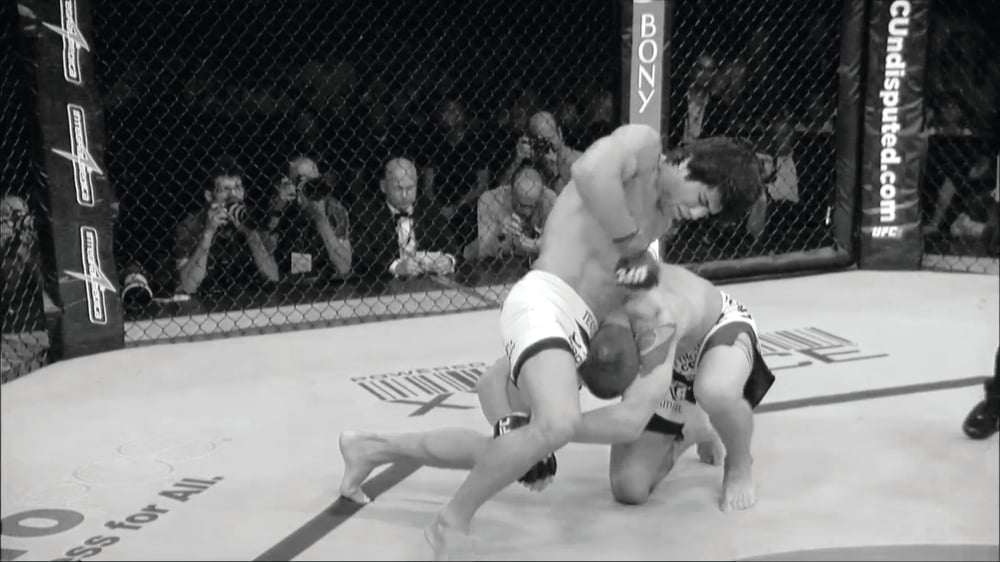
Issue 138
February 2016
Marc Goddard
FO’s resident Octagon third man breaks down the intricacies of the Unified Rules
Enforcing the back-of-the-head rule is no easy job for MMA referees
Sometimes fights get a little frantic and in the haste and eagerness to finish, particularly an opponent who becomes grounded, then we can witness wayward strikes to illegal target areas. Of course, it’s fairly obvious when a fighter kicks an opponent in the groin, but the lines can get blurred when their fist is thrown at their head.
A referee’s discretion is called upon quite frequently in such instances and it is here that I once again can offer some substance behind the details that are unclear to a lot of people. Many times coaches, fighters and fans alike may see or witness what they believe to be a foul blow – but was it?
The foul
Striking to the spine or the back of the head.
The breakdown
The back of the head, and the spine in its entirety, remain illegal target areas for obvious reasons. The spine, made up of individual bones called vertebrae, houses and protects our spinal column and central nervous system. Any intentional contact to such a vital area could be incredibly dangerous and must be a prohibited strike.
The detail
Much confusion has arisen over the years with many differing interpretations and explanations of the same foul, but that’s nothing new in MMA. The most common interpretations of the back-of-the-head rule have most commonly fallen into two categories: the ‘headphone’ and the ‘mohawk.’ Imagine a set of over-the-head headphones and any strike behind that headband would be deemed as illegal, or imagine a mohawk shaved into the head from back to front and any strike on the mohawk itself would again be prohibited.
In actual fact neither of the above are completely correct. The spine ends within the root of the brain stem at the back of the head, so having an illegal target area running to the front following the Mohawk rule does not make sense. Conversely the headphone rule does not allow for strikes to areas where the spine was exposed so both remains technically incorrect.
There is an adopted and accepted rule that offers something of a compromise to incorporate both of the above. If you draw a line from the top of one ear straight across the back of the head to the top of the opposite ear then anything below that line is out of bounds for strikes. Also, take a two-inch area from the middle of the horizontal line, up to the crown or the skull or where the head begins to curve. Once again, any strike landed within this remains illegal.
But even once you know the areas to watch for, it’s still not easy to judge in the heat of battle. We have to deal with imaginary lines on the backs of fighters’ heads as they’re scrambling. If you have a trigger-happy referee. I need to be sure a foul has taken place and the fighter has been affected because of it. If not, it’s in an experienced referee’s interest to let a fight flow as naturally as possible.
Another very important point of note to consider is that when strikes are thrown – usually on the ground – if a fighter turns their head and causes the blow to land within the illegal area then this is deemed a fair blow. Referees cannot action these kind of strikes or avail fighters who have been struck in this way. It’s an instinctive, involuntary reaction to turn your head when you see a punch coming in your peripheral vision.
I tell fighters in my rules briefing backstage, if they’re looking directly at the back of a guy’s head and I’m looking at the back of a guy’s head and they throw the shot, there’s no argument.

100% accurate
Carlo Prater vs. Erick Silva
It was 100% the right call to disqualify Silva for strikes to the back of the head. He was showing no control because he was looking down at Prater’s head, which didn’t move. He was tucked in on his leg, looking at the canvas and received a series of shots.
...









